one-state solution
description: proposed resolution of the Israeli-Palestinian conflict involving a single state with both Israelis and Palestinians as citizens
22 results
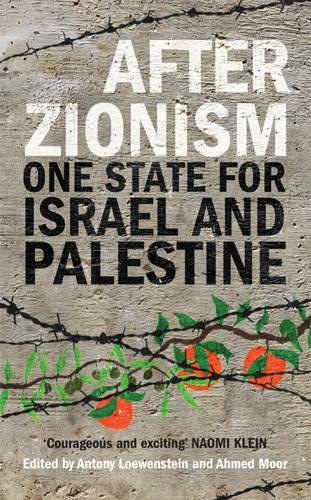
After Zionism: One State for Israel and Palestine
by
Antony Loewenstein
and
Ahmed Moor
Published 14 Jun 2012
Examples include the Los Angeles Times (Saree Makdisi, “Forget the Two-state Solution,” 11 May 2008), Newsweek (Sari Nusseibeh “The One-state Solution”, 29 August 2008), the Irish Times (“Nudge Towards Alternatives in the Middle East”, 13 March 2010), Foreign Policy (Dmitry Reider, “Who’s Afraid of the One-state Solution?”, 31 March 2010), and the Washington Post (George Bisharat, “Israel and Palestine: A True One-state Solution”, 3 September 2010). Since 2000 several US and European one-state groups have come and gone, but they have constantly been replaced by new ones,4 and an increasing number of conferences have been held on the one-state solution. In consequence, this solution is no longer seen as a novel or outlandish idea, and the fact that it is now part of the mainstream political discourse is reflected in the alarm expressed by many Israelis who fear it.
…
THIRTEEN How Feasible is the One-State Solution? Ghada Karmi Introduction Not long ago, the idea of a one-state solution for the conflict in Israel/Palestine was the preserve of a few intellectuals and activists on both sides. Over the last ten years, however, this vision has become an increasingly valid one for discussion and debate. Traditionally, the one-state idea has had its greatest appeal for Palestinians in the Diaspora, but even then amongst a small minority. Various Palestinian scholars and activists have written about the advantages of the one-state solution, as isolated works of interest mainly to similar enthusiasts.
…
But today the situation has changed. A widening and positive debate in print and on the internet about the one-state solution has become commonplace.1 Israeli and Jewish scholars have also been converted to the same cause.2 In the last few years especially, a Jewish/Israeli surge in the debate on the one-state solution has become apparent.3 Meron Benvenisti’s major 5,000-word essay in Haaretz’s 22 January 2010 supplement is a striking indication of this surge. In addition, mainstream western publications now regularly carry articles on the one-state solution, unheard of just ten years ago. Examples include the Los Angeles Times (Saree Makdisi, “Forget the Two-state Solution,” 11 May 2008), Newsweek (Sari Nusseibeh “The One-state Solution”, 29 August 2008), the Irish Times (“Nudge Towards Alternatives in the Middle East”, 13 March 2010), Foreign Policy (Dmitry Reider, “Who’s Afraid of the One-state Solution?”
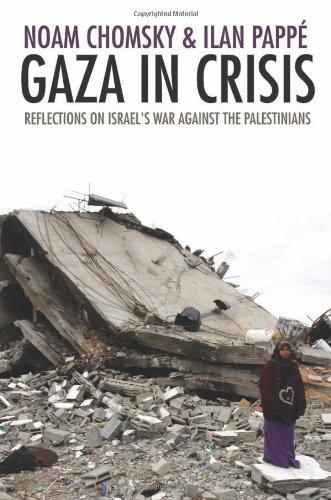
Gaza in Crisis: Reflections on Israel's War Against the Palestinians
by
Ilan Pappé
,
Noam Chomsky
and
Frank Barat
Published 9 Nov 2010
The resolution of a conflict can only occur when such a lid can be put firmly on the past and bring its horrors and evils to a close. At the academic and civil society level this realization is solid and has created fertile ground for the discussion about a one-state solution. However, this is unfortunately not the case with the mainstream media and political arena in the West or in the Arab world. There is a better chance to debate the historical narrative that to propagate the one-state solution at this stage in the struggle. Mainstream media and politicians reject out of hand the one-state solution, but may be willing to accept that their historical narrative so far was distorted and wrong and that they should view the conflict as a process that began in 1948, even in 1882, and not in 1967.
…
Said, the solution was one state where all the citizens (Arabs, Jews, Christians, etc.) would have the same democratic rights. Do you think that because of the situation in Gaza and the ever-spreading settlements, the pendulum will now swing toward a one-state solution as being the only possible end point to the conflict? Two points of clarification are necessary. First, there is a crucial difference between a one-state solution and a binational state. In general, nation-states have been imposed with substantial violence and repression for one reason—because they seek to force varied and complex populations into a single mold. One of the more healthy developments in Europe today is the revival of some degree of regional autonomy and cultural identity, reflecting somewhat more closely the nature of the populations.
…
One cannot doubt that there is a new impulse inside and outside of Palestine for a regime change: there is now a constant quest to change the realities in the present republic of Israel, which is a one-state solution by itself (ethnically and racially oppressive toward its Palestinian citizens and subjects). It is by and large a nonviolent impulse for equality and a craving for normality that should be translated into a powerful agent of change for the sake of Palestinians and Israelis alike. A TROUBLED HISTORY The one-state solution has a troubled history. It began as a soft Zionist concept of Jewish settlers, some of whom were leading intellectuals in their community, who wished to reconcile colonialism and humanism.

On Palestine
by
Noam Chomsky
,
Ilan Pappé
and
Frank Barat
Published 18 Mar 2015
Frank Barat Brussels September 2014 Chapter One The Old and New Conversations Ilan Pappé When Frank Barat and I sat with Noam Chomsky for a long discussion about Palestine we divided our conversation into three parts: a discussion on the past, focusing on understanding Zionism as a historical phenomenon; a conversation about the present, with a particular focus on the validity and desirability of applying the apartheid model to Israel and on the efficacy of the BDS movement as a major strategy of solidarity with the Palestinian people; and finally, in talking about the future, we discussed the choice between a two-state and a one-state solution. The principal purpose of these meetings was to help us all clarify our views in light of the dramatic changes not only in Israel and Palestine in recent years but in the region as a whole. We assumed that many readers would agree with us that Chomsky’s take on Palestine, at the present historical juncture, is a crucial contribution for any relevant discussion on the issue.
…
We need a more guarded approach when offering this new perspective, as we are not only challenging the hegemonic powers but also the convictions of many Palestinians and genuine friends of the Palestine cause. Hence framing this challenge as a conversation may be more helpful. I suggest enhancing this conversation by producing a theoretical dictionary, specific to the Palestine issue, that gradually replaces the old one. The new dictionary contains decolonization, regime change, one-state solution, and other terms discussed in the following pages and later with Noam Chomsky and others who try to find a way forward and out of an ongoing catastrophe. With the help of these entries, I hope to reexamine the hegemonic discourse employed by both the powers that be and the solidarity movement with Palestine.
…
In some ways, known and famous friends of the cause still endorse it—some, it seems, even religiously—in the name of realpolitik and efficiency. But the vast majority of activists are looking for a new way out. The emergence of the BDS movement, through the call for such action by Palestinian civil society inside and outside of Palestine, the growing interests and support for the one-state solution, and the emergence of a clearer, albeit small, anti-Zionist peace camp in Israel, has provided an alternative thinking. The new movement, which is supported by activists all around the world and inside Israel and Palestine, is modeled on the anti-apartheid solidarity movement. This has become clear by the prominence of BDS as the main tactic on campuses during Israel Apartheid Week—apartheid now an acceptable and common term used by student activists on behalf of the Palestine cause.
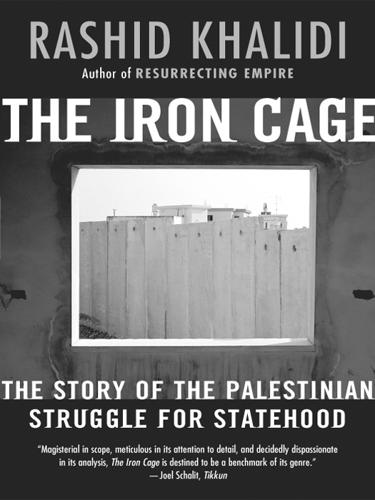
The Iron Cage: The Story of the Palestinian Struggle for Statehood
by
Rashid Khalidi
Published 31 Aug 2006
This realization has in turn instigated renewed consideration of the old idea of a one-state solution, as either the ideal outcome or as the most likely default outcome, for Palestine/Israel.43 There are significant differences among those who have put forward this idea. Some argue that whether such a solution is desirable or not to the peoples concerned (and majorities of both Palestinians and Israelis appear to prefer to live in separate national states), it is the inevitable outcome of the extension into the immediate future of current trends. Those who hold this view, which might be termed the de facto one-state solution, see that it will come about (notwithstanding Israel’s recent withdrawal from the Gaza Strip and possible further West Bank withdrawals) when the inexorable creeping de facto annexation of the West Bank and East Jerusalem at some point finally makes the creation of a contiguous Palestinian state physically impossible.
…
But Israelis have thus far shown more of a desire for the Palestinians to be out of sight and out of mind than to come to grips with the consequences of the actions of their elected governments insofar as settlements and occupation are concerned. Barring such a voluntary change, this international anchoring of the current nature of Israel as a Jewish state would seem to be yet another obstacle to some forms of a one-state solution. There are thus major obstacles to considering the logical consequences of the continuation of present trends in the direction of a one-state solution. Yet these trends have perhaps been as forcefully advanced by policies of the Bush administration that undermine the possibility of a two-state solution as by the actions of successive Israeli governments tending in this direction.
…
It is also because the annexation to Israel of the major “settlement blocs” located at strategic and central locations in the West Bank and around Jerusalem, and of the Jordan River Valley, will mean that Israel permanently controls the West Bank, even if its forces eventually do evacuate the areas left to the Palestinians. The implications of these projected actions for the creation of a viable Palestinian state, and therefore of the two-state solution, are ominous, and very possibly fatal. A One-State Solution The question of what state structure or structures are appropriate for Palestine and Israel has been profoundly influenced by the actions over many years of Palestinian leaders and different Israeli governments, as just described. It has been affected as well by important transformations in U.S. policy by the administration of George W.

Letters to My Palestinian Neighbor
by
Yossi Klein Halevi
Published 14 May 2018
Arafat’s defenders tried to reassure Israelis: He’s just playing to the crowd. But the cumulative impact of Arafat’s rhetoric reinforced the deepest Israeli fears of being deceived, of lowering our guard. Like most Israelis, I came to believe we’d been played for fools. A two-state solution had never been Arafat’s intention—except as prelude to a one-state solution, the end of the Jewish people’s dream of sovereignty. For Israel there would be no peace, only territorial withdrawals accompanied by terrorism. The Israeli Right was vindicated: More Israeli concessions led to more terror. In supporting the Oslo process, I had violated one of the commanding voices of Jewish history, the warning against naïveté.
…
If you tell me, neighbor, that Haifa belongs to you, my response is: I understand, from your perspective Haifa does belong to you. But the problem is that, from my perspective, Hebron belongs to me. Given the failure of the peace process and the emotional resistance on both sides to partition, it is tempting to embrace a one-state solution, in which Palestinians and Israelis will somehow jointly govern. But those promoting that seeming solution are deceiving themselves. The only solution worse than dividing this land into two states is creating one state that would devour itself. No two peoples who have fought a hundred-year existential war can share the intimate workings of government.
…
No two peoples who have fought a hundred-year existential war can share the intimate workings of government. The current conflict between us would pale beside the rage that would erupt when competing for the same means of power. The most likely model is the disintegration of Yugoslavia into its warring ethnic and religious factions—perhaps even worse. A one-state solution would condemn us to a nightmare entwinement—and deprive us both of that which justice requires: self-determination, to be free peoples in our own sovereign homelands. I need a Jewish state. Not a state only for Jews—even after partition a substantial minority of Palestinian citizens of Israel will remain in its borders—but a state where the public space is defined by Jewish culture and values and needs, where Jews from East and West can reunite and together create a new era of Jewish civilization.

Who Rules the World?
by
Noam Chomsky
Non-Aligned Movement Non-Proliferation Treaty (NPT) NORAD North American Free Trade Agreement (NAFTA) North Atlantic Treaty Organization (NATO) Northern Alliance North Korea North Vietnam Norway nuclear weapons Nuremberg tribunal Obama, Barack assassinations and climate change and Cuba and economy and energy and habeas corpus and Israel and Latin America and nuclear weapons and terrorism and torture and Obeid, Sheikh Abdul Karim Occupied Territories Occupy movement oil. See also energy Okinawa Oman one-state solution Ornstein, Norman Orwell, George Oslo Accords Oslo Peace Research Institute Ostrom, Elinor Ottoman Empire Oxfam Ozanne, Julian Pacific Rim Pakistan Palestine (Carter) Palestine Liberation Organization (PLO) Palestinian Authority (PA) Palestinian National Council (PNC) Palestinians. See also Israeli-Palestinian conflict; and specific territories binational secular democracy and elections of 2006 expulsion of “external” vs “internal” Palestinian state. See also one-state solution; two-state solution Palmerston, Lord. See Temple, Henry John Panama Paris agreement on climate change Paterson, Thomas Peace Now Pearl Harbor attacks Pentagon Peres, Shimon Pérez, Louis Peri, Yoram Perry, William Persian Gulf personhood Peru Peterson, David Petraeus, David Petrov, Stanislav Philippines Physicians for Global Survival Physicians for Social Responsibility Pillar of Defense, Operation Pinochet, Augusto Plain of Jars plutonomy Political Science Quarterly Polk, William Porter, Bernard Power, Samantha Pravda presumption of innocence preventive war prisons and incarceration privatization “Problem Is Palestinian Rejectionism, The” (Kuperwasser and Lipner) Program for Public Consultation Protective Edge, Operation Providentialist doctrines public opinion public relations Puerto Rico Pugwash Conferences Putin, Vladimir Qaddafi, Muammar al- Qatar Question of Torture, A (McCoy) Rabbani, Mouin Rabin, Yitzhak Rachman, Gideon radical fundamentalist Islam.
…
The near-inevitable outcome, “one state for two nations,” will pose “an immediate existential threat of the erasure of the identity of Israel as a Jewish and democratic state,” which would soon have a Palestinian-Arab majority.1 On similar grounds, in Britain’s leading journal of international affairs two prominent Middle East specialists, Clive Jones and Beverly Milton-Edwards, write that “if Israel wishes to be both Jewish and democratic,” it must embrace “the two-state solution.”2 It is easy to cite many other examples, but unnecessary, because it is assumed almost universally that there are two options for mandatory Palestine: either two states—Palestinian and Jewish-democratic—or one state “from the sea to the river.” Israeli commentators express concern about the “demographic problem”: too many Palestinians in a Jewish state. Many Palestinians and their advocates support the “one-state solution,” anticipating a civil-rights, anti-apartheid struggle that will lead to secular democracy. Other analysts also consistently pose the options in similar terms. This analysis is almost universal, but crucially flawed. There is a third option—namely, the option that Israel is pursuing with constant U.S. support—and this third option is the only realistic alternative to the two-state settlement.
…
Hussein, Saddam Husseini, Faisal Ibrahim, Youssef Ickes, Harold immigrants imperialism India Indians (Native Americans) indigenous populations Indochina Indonesia industrial revolution Industrial Workers of the World inequality Intergovernmental Panel on Climate Change (IPCC) internal security International Court of Justice International Criminal Tribunal for the former Yugoslavia International Energy Agency International Monetary Fund (IMF) International Physicians for the Prevention of Nuclear War International Security Intifada Iran coup of 1953 Iran Air Flight 655 Iran-Iraq war Iraq U.S. invasion of Ireland Iron Fist operations ISIS (Islamic State) Islamic Jihad Islamic world Israel. See also Jerusalem; one-state solution; two-state solution; and specific operations, wars, and territories Buenos Aires embassy bombing demography and Gaza and Greater Iran and Lebanon and Libya and North Korea and Oslo Accords and separation wall and settlements and Tunisia and Israeli-Arab wars 1967 1973 Israeli High Court of Justice Israeli Knesset Israeli-Palestinian conflict.

Enemies and Neighbours: Arabs and Jews in Palestine and Israel, 1917-2017
by
Ian Black
Published 2 Nov 2017
This campaign did not only target the occupied territories or demand the labelling of produce from illegal settlements (so that European shoppers could refuse to buy them) but all Israeli institutions – on the grounds that the entire state and many private bodies (banks, for example) were complicit in the occupation. It also opposed any kind of ‘normalization’ with Israelis, which limited the scope for joint struggle, as did the fact that influential supporters backed a one-state solution to the conflict.25 The symbol chosen by BDS was Handala – the defiant, ageless Palestinian cartoon child drawn by Naji al-Ali. In his new role little Handala clutched the scales of justice patiently behind his back. Israel began to warn of a campaign of demonization and ‘delegitimization’ it claimed was motivated by the anti-Semitism of enemies who rejected its very existence.
…
It featured a Jewish man at Ben-Gurion Airport being informed in 2048 (the date presumably chosen for its historic anniversary) that he would not be allowed to fly out on holiday because his absence abroad would ‘tip the demographic balance’ and create an Arab majority between the Mediterranean and the Jordan – the exactly deadlocked population figures recorded in columns flashing alarmingly on a giant digital screen. ‘Jenin [in the West Bank] is lovely at this time of year,’ says the passport control officer, consolingly. ‘And it’s ours.’18 Israeli right-wingers had their own variant of the one-state solution: annexation of part or all of the West Bank, with ‘autonomy on steroids’, in Naftali Bennett’s catchy formulation, rather than citizenship for its Palestinian residents. President Reuven Rivlin occasionally called for Israeli annexation with citizenship for Palestinians – a striking variation on the traditional Zionist aspiration for more territory but with the minimum number of Arabs living on it.
…
Rivlin had previously called for mass Jewish immigration in order to maintain a Jewish majority.19 Gaza’s fate was simply ignored, along with its now 2 million-strong population. In Israel, in any event, the idea was widely condemned. The risk was of sectarian or inter-communal strife, as experienced in Lebanon, the former Yugoslavia, or, more recently, in Syria. That kind of one-state solution ‘could drag both peoples here into an endless civil war’, Haaretz warned.20 ‘Marketing the one-state idea requires the systematic understatement of the ferocity of the conflict between Jews and Arabs, Palestinian and others’, noted the Israeli Middle East scholar Asher Susser, making the case for what he called ‘the two-state imperative’.21 Other Israelis – scientists, artists and public intellectuals – and Diaspora Jews who agreed with that imperative, prepared for the jubilee of the 1967 war by setting up an organization they named SISO: Save Israel and Stop the Occupation.
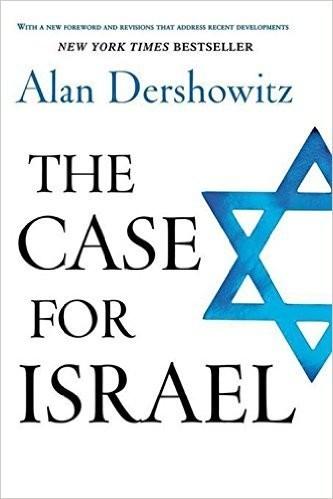
The Case for Israel
by
Alan Dershowitz
Published 31 Jul 2003
Chomsky has long preferred, and apparently still prefers, a single binational federal state based on the models of Lebanon and Yugoslavia.4 The fact that both of these models failed miserably and ended in bloody fratricide is ignored by Chomsky, for whom theory is more important than experience. Said is adamantly opposed to any solution that leaves Israel in existence as a Jewish state: “I don’t myself believe in a two-state solution. I believe in a one-state solution.”5 He, along with Chomsky, favors a binational secular state—an elitist and impractical solution that would have to be imposed on both sides, since virtually no Israelis or Palestinians would accept it (except as a ploy to destroy the other side’s state). To be sure, the poll numbers in favor of a two-state solution vary over time, especially according to circumstance.
…
In times of violent conflict, more Israelis and more Palestinians reject compromise, but most reasonable cintro.qxd 6/25/03 4 7:59 AM Page 4 THE CASE FOR ISRAEL people realize that whatever particular individuals would hope for in theory or even claim as a matter of God-given right, the reality is that neither the Israelis nor the Palestinians will go away or accept a one-state solution. Accordingly, the inevitability—and correctness—of some sort of two-state compromise is a useful beginning to any discussion that seeks a constructive resolution of this dangerous and painful conflict. An agreed-upon starting point is essential, because each party to this long dispute begins the narrative of its claim to the land at a different point in history.
…
See Mohammed Muslims discrimination of non-Muslims by, 155, 156 Holocaust and, 54–58, 59, 60 Husseini as leader of, 40 bindex.qxd 6/25/03 262 8:44 AM Page 262 INDEX Muslims (continued) persecution of Jews by 17, 18–21, 58–61 Nasser, Gamal Abdel, 91–92, 142 Nazis, 52, 54–55, 57. See also Hitler; Holocaust “Nazi Scouts,” 54 Negev Desert, 68 neo-Nazis, 191, 232 “No peace with Israel, no negotiations with Israel, no recognition of Israel,” 97 Novak, Bob, 123 nuclear weapons, in Israel, 103 Nusseibi, Hazam, 82 oil interests, 225 one-state solution, 4 Oren, Michael, 52, 93–94, 142–43 Oslo peace process, 72, 108 Oslo II Agreement of 1995, 88, 99, 109 Ottoman Empire, 17, 19, 21, 24, 33 Palestine and Camp David-Taba negotiations, 97, 105 demographics of, 24–28, 33, 34, 67–69 ethnicity in, 24–25, 26 and First Aliyah, 23–28 history of claims to, 4–5 and Israeli occupation, 96, 97, 241 Jewish majority in areas of, 17, 19, 27, 33, 59, 68–69 Jewish presence in, 5, 6, 15–21, 27–28, 35–36, 46 land purchases by Jews, 25–26 living conditions in, 27, 28, 46, 161 medical response to terrorism by, 125 non-Jewish immigrants to, 28 under Ottoman rule, 24 peace offers rejected by, 105–16, 176–77, 206–207 Phalangist massacre of 1982, 12 Phased Plan for liberation of, 72–73 post-World War I reorganization of, 33 shifting boundaries of, 24–25 statehood, 7–8, 159, 161–65, 177, 234, 235, 238–40 “takeover” by Jews of, 39–44 United Nations partitioning of.

The Idea of Israel: A History of Power and Knowledge
by
Ilan Pappe
Published 30 Apr 2012
If this campaign continued, warned the Reut Institute, Israel would become a pariah state and there would be no solution for the Palestinian question, bringing a one-state solution to the fore. When Zionist bodies warn against the danger of a one-state solution, what they mean is what Israeli prime minister Ehud Olmert warned against in 2007: that Israel would necessarily end up as an apartheid state under such a scenario.33 ‘A tipping point in this context would be a paradigm shift from the Two-State Solution to the One-State Solution as the consensual framework for resolving the Israeli–Palestinian conflict’, states Reut. Even a comprehensive permanent status agreement would not be capable of putting an end to the delegitimisation campaign, because inherent in those efforts, contends Reut, is the negation of Israel’s right to exist.
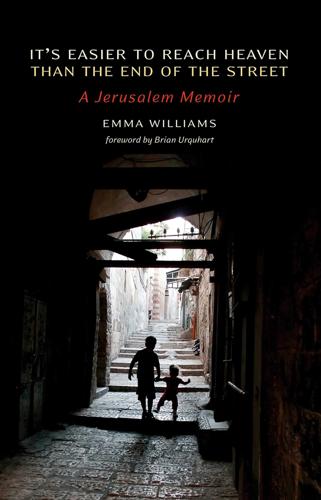
It's Easier to Reach Heaven Than the End of the Street: A Jerusalem Memoir
by
Emma Williams
Published 7 Nov 2012
Camp residents and a second ambulance tried to rescue him from the burning vehicle but were fired on by the army. * Arab countries are vocal about Palestinian rights and use the issue as an excuse to maintain their current political systems, but in reality do little to help. * Two-state solution: two independent and sovereign states, Israel and Palestine. The alternative some advocate is the “one-state solution”: a bi-national state for Israelis and Palestinians. ** Whereas he had been acceptable enough to the Israeli government for the Oslo process to take place, he now fell short of Israeli requirements: to maintain Israel’s security while the occupation deepened, and to sell to the Palestinian people whatever final deal the Israeli government wanted him to accept.
…
“If Israelis could grasp that they are being pushed into the end of the two-state solution, and that they’ll end up with us as the majority and with citizenship, wouldn’t they change their minds?” Another Palestinian sat down on a bench with Paul and me, watching the women drift in and out of the dancing. He added his frustration to Paul’s: “The PA won’t talk about the one-state solution because that means giving up on independence. The Israelis won’t talk about it because it means the end of the Jewish state, and they say that this is what we have planned all along, using it as a cunning way to obliterate Israel. But, Christ, what choice is there now? Thanks to the settlers and their infrastructure, we’re locked so tight into the State of Israel we’re like a bug in concrete.”
…
I went home very late, creeping in and hearing the baby cry as I closed the front door, feeling more grateful than ever to Julita for providing such consistent care and love for my children. I had heard Israelis and Palestinians debate a single state before. I had listened to people say that the one-state solution had always been the only equitable answer. To others who said they would not care what the country was called as long as they could return to their village and lands and their culture unfettered, and that they would defend these against anyone. I had heard Israelis and Palestinians reach bravely beyond the hate, beyond the challenges of nationalism, into a place where both would be permitted to join their neighbors and form an economic union or regional confederation.
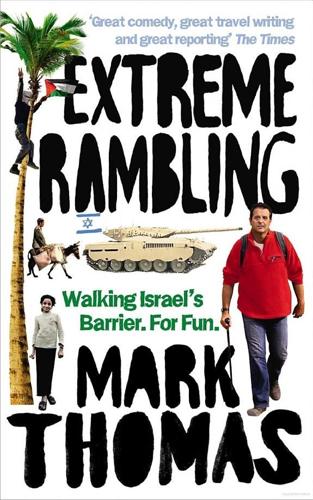
Extreme Rambling: Walking Israel's Separation Barrier. For Fun.
by
Mark Thomas
Published 13 Apr 2011
And so he struts and frets his hour on a stage of his own making, answering questions of his own asking and railing against enemies of his own choosing: religious settlers sacrificing Israel on the altar of their egos; politicians immersed in ignorance; and the ever-indifferent, non-breeding, dog-owning, pastry-loving elite in Tel Aviv. To Soffer, their biggest crime is in failing to comprehend the greatest threat of all: the breeding Palestinians within the one-state solution, with two nationalities living within one country. For Soffer, the economic consequences of a one-state solution are disastrous: ‘The income gap between this village,’ – he points to the Palestinian side – ‘and this one,’ – he gestures to the Israeli homes – ‘is one to twenty. There is no other such place on earth.’ He pauses as if considering the magnitude of his own insight, and stares off into the abyss of a bi-national state.

Can We Talk About Israel?: A Guide for the Curious, Confused, and Conflicted
by
Daniel Sokatch
Published 18 Oct 2021
In 1939, on the eve of World War II, as disaster approached the Jews of Europe, the British issued yet another white paper reversing their position on partition and instead introducing a new policy that envisioned a Jewish national home—there were already almost half a million Jews in Palestine by this time, alongside around one million Arabs—as part of an independent Palestine governed jointly by Arabs and Jews, something like the “one-state solution” you hear people talk about today. The “White Paper of 1939” also imposed restrictions on Jewish land purchases in Palestine and, critically, announced severe limits on Jewish immigration to Palestine at perhaps the most dangerous and desperate moment in Jewish history, just before the beginning of the Nazi Holocaust, in which six million Jews would be murdered.
…
Most Israelis don’t want to live in a single democratic country with the Palestinians. And large numbers of Palestinians still favor the establishment of an independent Palestinian state next to Israel. So, if it’s not what either of the parties to the conflict actually wants, it doesn’t seem like this version of a “one-state solution” is likely to succeed at the moment. Still, there are more than a few people who support applying boycotts, divestment, or sanctions to Israel who aren’t part of the official BDS movement, don’t want to see Israel disappear, and aren’t really concerned with future theoretical regional political arrangements.

Ten Myths About Israel
by
Ilan Pappe
Published 1 May 2017
The funeral should energize us all to follow the same distribution of labor as before. As urgently as ever, Palestinians need to solve the issue of representation. And the progressive Jewish forces in the world need to be more intensively recruited to the BDS and solidarity campaigns. In Palestine itself, the time has come to move the discourse of the one-state solution into political action, and maybe to adopt the new dictionary. Since the dispossession is everywhere, the repossession and reconciliation will have to occur everywhere. If the relationship between Jews and Palestinians is to be reframed on a just and democratic basis, then we can accept neither the old, buried map of the two-states solution nor its logic of partition.

Catch-67: The Left, the Right, and the Legacy of the Six-Day War
by
Micah Goodman
Published 17 Sep 2018
Any right-wingers with a shred of intellectual honesty must take into account the risk that the left’s demographic nightmare could yet come true. In a rational calculation of that risk, given the demographic assumptions of the right, the loss of Israel’s Jewish majority is an unlikely but still devastating prospect—a high-impact, low-probability event. Betting on a one-state solution is like investing in a stock that analysts say has a small chance of falling but would be totally wiped out if it fell. No rational or responsible investors would put all their money in such a stock. This is the crux of the irrationality of right-wing supporters of annexation: they are willing to bet 100 percent of Israel’s survival on this one demographic stock.

Propaganda and the Public Mind
by
Noam Chomsky
and
David Barsamian
Published 31 Mar 2015
Reflections on Justice and Nationhood (New York: Vintage Books, 1974), pp. 49-92. 23. Meron Benvenisti, Intimate Enemies: Jews and Arabs in a Shared Land (Berkeley: University of California Press, 1995). 24. See Azmi Bishara, “Where Suicide Bombs Come From,” New York Times, February 17, 1995, p. A31. 25. Edward W. Said, “The One-State Solution,” New York Times Magazine, January 10, 1999, p. 6: 36ff. Or see Edward W. Said, “Truth and Reconciliation,” in The End of the Peace Process: Oslo and After (New York: Pantheon Books, 2000), pp. 312-21. 26. Bob Edwards, interview with James Glassman, NPR, Morning Edition, January 21, 1999. Peter Jennings, “No Easy Way to Save Social Security,” ABC, World News Tonight, December 8, 1998. 27.

Drama Queen: One Autistic Woman and a Life of Unhelpful Labels
by
Sara Gibbs
Published 23 Jun 2021
Most of my graduate friends would go on to spend months, in some cases years, looking for an entry-level opportunity. I was lucky. John the IT guy continued to antagonise me. I did not like him one bit. In my first week we got into a debate about the Israel–Palestine conflict in which he proposed a one-state solution was the answer. ‘Then you’re either an extremist or an idiot,’ I snapped at him. He looked momentarily stunned, then smiled at some private joke in his head and walked away. Dickhead, I thought. And then, a few days in, I got a call on my work line from my brother. My Israeli grandmother had died.

The Biggest Prison on Earth: A History of the Occupied Territories
by
Ilan Pappé
Published 21 Jun 2017
Retrieved 9 November 2015. 29.Lenczowski, American Presidents and the Middle East, 1990, p. 105. 30.LBJ, National Security File, Box 104/107, Middle East Crisis: Jerusalem to the Secretary of State, 8 June 1967; Barbour to Department, 8 June 1967; Joint Embassy Memorandum, 8 June 1967. 31.This early period is discussed in detail in Chomsky and Pappe, Gaza in Crisis, 2010, pp. 19–56. 32.A prediction made in the government meeting on 19 June 1967. 33.These quotes can be found in a special report on the Israeli Settlements in the Occupied Territories, A Special Publication of the Foundation for Middle East Peace, February 1994. 34.Ibid. 35.See Chomsky and Pappe, Gaza in Crisis, 2010, pp. 19–56. 36.Israel State Archives, government meetings, 19 June 1967. 37.Ibid. 38.Haaretz published long quotes from this meeting, 2 November 2003. 39.Spiegel, The Other Arab–Israeli Conflict, 1985, p. 160, and Hershberg, ‘Ethnic Interest Groups and Foreign Policy’, 1973, pp. 27–8. 40.In Haaretz. 41.See, for instance, Haaretz and Maariv, 21 and 26 June 1967. 42.Haaretz, 7 June 1967. 43.This argument is made by Zertal and Eldar, Lords of the Land, 2009. 44.On Fulbright and AIPAC see Pappe, ‘Clusters of history’, pp. 4–27. 45.See further analysis on this in Pappe, The Forgotten Palestinians, 2011, pp. 94–100. 46.See Pappe, ‘Moshe Sharett, David Ben-Gurion and the “Palestinian Option”, pp. 77–95. 47.See ‘Palestinians revive idea of one-state solution’, Toronto Star, 15 September 2008. 48.Shehadeh, The Third Way, 1982. 49.Haaretz, 8 June 1967. Haaretz’s general line from 27 May 1967 was that Israel should attack Egypt, and later it supported an overall war. Chapter Three: The Greater Jerusalem as a Pilot Project 1.A dunam is a unit of land used in the Ottoman Empire and still in use in many parts of the Middle East.

Hopes and Prospects
by
Noam Chomsky
Published 1 Jan 2009
Dayan’s analogy, Gorenberg, Accidental Empire, 81–2. For more on these matters, see Failed States, chap. 5; my Middle East Illusions (Lanham, MD: Rowman and Littlefield, 2003), chap. 6. Herald cited by James Bradley, The Imperial Cruise (New York: Little, Brown & Co., 2009), 63. 36. Sometimes called a “one-state solution,” though there clearly are two groups, each entitled to respect for their own cultural mix, language, and identity. 37. See Failed States, 193ff. 38. For an illustration, see economist Sever Plocker (“A Thorn in the World’s Side,” Yediot, November 3, 1999; http://www.ynetnews.com/articles/0,7340,L-3798761,00.html), describing with despair how he must cancel a lecture in Oxford because the anti-Israel atmosphere there is so extreme that he would be treated as a leper.
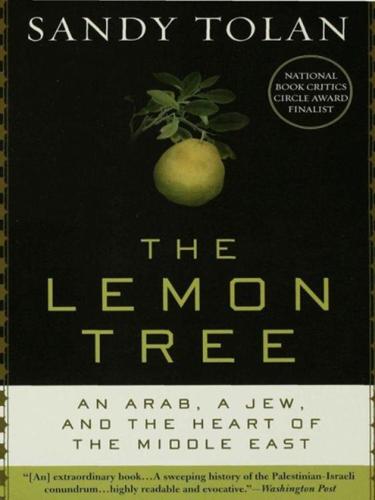
Lemon Tree: An Arab, a Jew, and the Heart of the Middle East
by
Sandy Tolan
Published 1 Jan 2006
The pressures on Britain at the end of the colonial era and how this contributed to their quitting Palestine a year after quitting India were pointed out to me by Tom Segev in his comments on an early draft of my manuscript. The arrival of the UN fact-finding team, known as the United Nations Special Commission on Palestine, or UNSCOP, is mentioned in Righteous Victims, pp. 180-84, and in Segev, pp. 495-96. Palestinians' concerns about the potential fate of Arabs in a Jewish state and their desire for a one-state solution come from several sources, including an interview with the Palestinian scholar Naseer Aruri. The fractured nature of Palestinian society in 1947, particularly in the wake of the Arab Rebellion, is discussed in Rashid Khalidi's Palestinian Identity, pp. 190—92; Yoav Gelber's Palestine 1948, pp. 31-33; and Ilan Pappe's A History of Modern Palestine, pp. 119-20.

Cities Under Siege: The New Military Urbanism
by
Stephen Graham
Published 30 Oct 2009
., ‘Performing Security: Lhe Imaginative Geographies of Current US Strategy’, Political Geography 26, 405–22, 2007. 31 Dag Tuastad, ‘Neo-Orientalism and the New Barbarism Thesis’, 591–99. 32 Patai, The Arab Mind. 33 Mishra, ‘In Search of Monsters to Destroy’. 34 Agamben, Homo Sacer. 35 Omar Barghouti, ‘Relative Humanity – The Fundamental Obstacle to a One State Solution’, ZNet, 16 December 2003. 36 Dexter Filkins, ‘A Region Inflamed: Tough New Tactics by US Tighten Grip on Iraq Towns’, New York Times, 7 December 2003. 37 Assaf Oron, ‘An Open Letter to Jewish Americans’, Seruv.Org, March 2002. 38 Jasbir Puar and Amit Rai, ‘Monster, Terrorist, Fag: The War’. 39 Carl Boggs and Tom Pollard, ‘Hollywood and the Spectacle of Terrorism’, New Political Science 9: 6, 2006. 40 Alastair Crooke, ‘New Orientalism’s ‘‘Barbarians’’ and ‘‘Outlaws’’, The Daily Star (Beirut), 5 September 2006. 41 Derek Gregory, ‘Who’s Responsible?’

The Zionist Ideas: Visions for the Jewish Homeland—Then, Now, Tomorrow
by
Gil Troy
Published 14 Apr 2018
“I find Zionism today still a dynamic word we can actually use,” one Israeli fighter pilot turned high-school teacher recently proclaimed. “Judaism and Israel are too solid. Zionism [invites me to] create what I think Israel should be.” Another activist invokes the word to distinguish himself from other leftists who seek a one-state solution. Using the “Z-word” broadcasts his commitment to a Jewish state. The Zionist Beauty Myth could easily paralyze Rachel Sharansky Danziger. One of two daughters of Natan and Avital Sharansky, she grew up in the Jerusalem home of two Zionist icons: the Soviet dissident who resisted the KGB, and his equally indomitable wife who fought ferociously for his freedom.
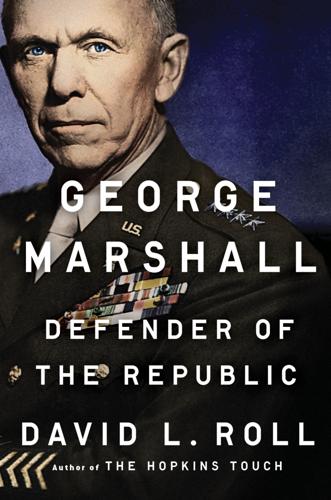
George Marshall: Defender of the Republic
by
David L. Roll
Published 8 Jul 2019
This was intended to convey the thought that partition—establishment of a sovereign Jewish state and a separate state for Palestinian Arabs—remained the ultimate goal. In the next sentence, the press statement said that “trusteeship does not prejudice the character of the final political settlement.” This point obviously opened the door to a one-state solution or some other political settlement that would not involve partition and a separate Jewish state. Truman was known for plain speaking. However, his press release, drafted by Clifford, was anything but. Moreover, in addressing the use of force, Truman’s release, in a backhanded way, endorsed the UN Charter interpretation first advocated by Marshall and Lovett in February and in addition said that in any case American troops would not be used in Palestine “as a matter of national policy.”68 Just as Truman’s press release did little to repair the negative political fallout from Austin’s statement to the UN, Marshall’s effort to arrange a truce came to naught.